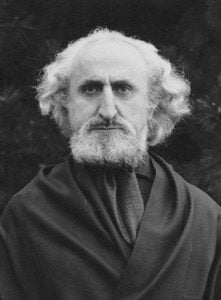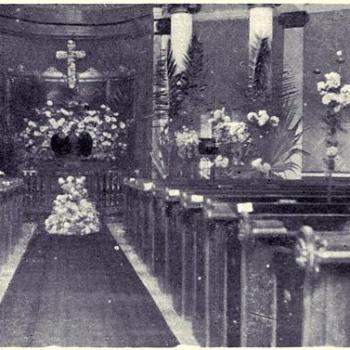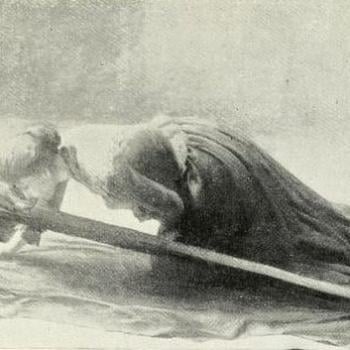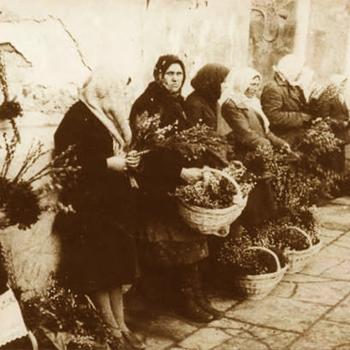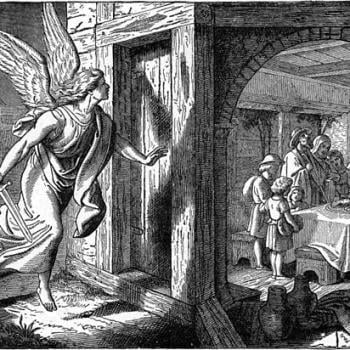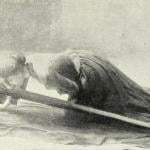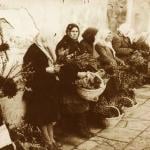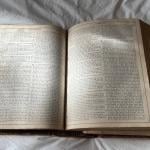Frithjof Schuon was born in Basel, Switzerland, on this day, the 18th of June, in 1907.
His mother was a francophone Alsatian while his father was German Swiss. His father, Paul was a concert violinist, and the family was a center of music, literature, and spirituality. The Schuon’s were progressive Catholics.
From his childhood Schuon was obsessed with spiritual matters. While in primary school he became friends with Titus Burckhardt, who in time would gain renown as a translator and Sufi scholar. The two boys would grow into lifelong friends.
With his father’s untimely death in 1920, his mother moved across the border to France. At fourteen he was baptized as a Catholic. Schuon’s spiritual quest led him to devour the Bible, the Quran, the Hindu classics the Upanishads and the Bhagavad Gita, as well as Plato. He also read into Goethe and Schiller, and later Emerson.
Schuon found work as a textile designer. And he found the writings of Rene Guenon.
Guenon is a pivotal figure in the establishment of the Traditionalist movement. Traditionalism is a slippery term, and is sometimes associated with rightest movements and on occasion fascism. Religious Traditionalism teaches that there is a perennial philosophy, which is found within all the great “orthodox” religions. Traditionalism is sometimes distinguished in rejecting an appeal to mystical experience, instead calling on “metaphysical intuitions.” I admit to having trouble sorting these two things, mystical insight and certainty of certain metaphysical assertions. It feels, if you will, that his principles were a bit arid, certainly cerebral. And. It could be argued his and indeed the Traditionalist way a jnana approach to the fundamental matter.
Guenon himself began as an esotericist. And a cornerstone of his Traditionalism, in addition to a rejection of the whole modernist project, was a path involving initiation into an orthodox religion, while maintaining perennialist principles. Guenon chose Islam and was initiated into Sufism. There are controversies surrounding the order within which he was initiated, but the larger assertions remain.
Schuon found his spiritual home.
Meanwhile he became a French citizen and served a term in the French army. After his military service he returned to work as a textile designer while immersing himself in the study of Arabic. In 1932 he published his first book, translated into English three years later as Primordial Meditation: Contemplating the Real.
He also decided to study in the East. He went to Marseille where he met some Sufis, then to Algeria, where he formally became a muslim and began to study with the Shaykh Ahmad al-Alawi. Interestingly he did not see his becoming a muslim and Sufi a rejection of Christianity. But rather a sad acknowledgement there were no true masters of the inner way within the Christian tradition and no spiritual practices, and this was a simple necessity.
In 1936 he had some form of spiritual experience, and felt he had been designated a shaykh, or spiritual teacher. He went on to Cairo where he met with Guenon. Schuon had intended to go to go to India, but at his arrival in Bombay, World War II began. He returned to France where he was briefly detained by the Nazis, but managed to escape to Switzerland. There he read Black Elk Speaks and became enamored with native American spiritualities.
In 1948 he wrote what might be his magnum opus, the Transcendent Unity of Religions. It was well received. T. S Eliot is cited at numerous sites saying of this book, “I have met with no more impressive work in the comparative study of Oriental and Occidental religion.” Many others share that view.
The next year Schuon married the artist Catherine Feer.
Over several visits to the United States in 1959 and 1963, they visited with native Americans. They were formally adopted into a Sioux family and then into the Sioux nation.
In 1980 the Schuons emigrated to the United States, he was seventy-four at the time. They settled in Bloomington, Indiana. A number of his admirers and students lived in the area, making it a reasonable choice. Schuon also had a lifelong and ever deeper interest in Mary, the mother of Jesus. Reflecting this he would name his Sufi order the Maryamiyya (“Marian” in Arabic) as a branch of the Shadhiliyyah–Darqawiyyah–Alawiyyah order.
Before he died he and his organization were accused of sexual misconduct. The community vigorously denies the allegations, some of which are deeply troubling. For those who want to delve further into this need simply google the relevant terms.
Schuon died in Bloomington on the 5th of May, 1998. He was ninety years old.
So what did he teach?
Schuon himself said, “The key to the eternal sophia is pure intellection or in other words metaphysical discernment. To “discern” is to “separate”: to separate the Real and the illusory, the Absolute and the contingent, the Necessary and the possible, Atma and Maya. Accompanying discernment, by way of complement and operatively, is concentration, which unites: this means becoming fully aware — from the starting point of earthly and human Maya — of Atma, which is both absolute and infinite.”
Schuon’s teachings do not lend themselves to very brief explication. For a relatively brief summation of his views go here or here.
I am not a Traditionalist, although perhaps I am a traditionalist in a lower case sort of way. I am a naturalistic perennialist, to coin a term. By which I mean that our brains are able to cut the world into two, slice and dice, and predict, and that’s the secret of our success as a species. Well, that and those opposable thumbs. But, and this is the important thing, we can also cut the two into one. We can see beyond the divisions.
There are negative take aways for me in the Traditionalist movement. The esotericism and explicit certainty of the Traditionalists is a problem. The hard divide between illusion and reality is another problem. In my view. I find the gnostic knowing is in fact a letting go of views. Also, it has inclinations toward authoritarianisms of several sorts. The inclination to right wing politics is instructive. The allegations against Schuon and his organization cannot be ignored, either. And is possibly baked into the whole Traditionalist project.
And, I don’t know from metaphysics. The nondual vision is a mystical, a spiritual insight. It is, I believe with all my heart, the great gift of the universe. It is also slippery, not something that can be put into a single box.
While we do not need any given religion to find this insight, it is natural, biological; the religions of the world are all in part about this amazing finding. And some have spent considerable time cultivating paths to this insight. And, some have explored its ethical applications. And, well, again, it is part of the religions of the world. A significant cross over with the Traditionalists is that the most successful paths appear to be found within the religions. And the skillful teachers are usually found within the traditions. So, you know, Tradition if not precisely Traditionalism…
So… And so…


